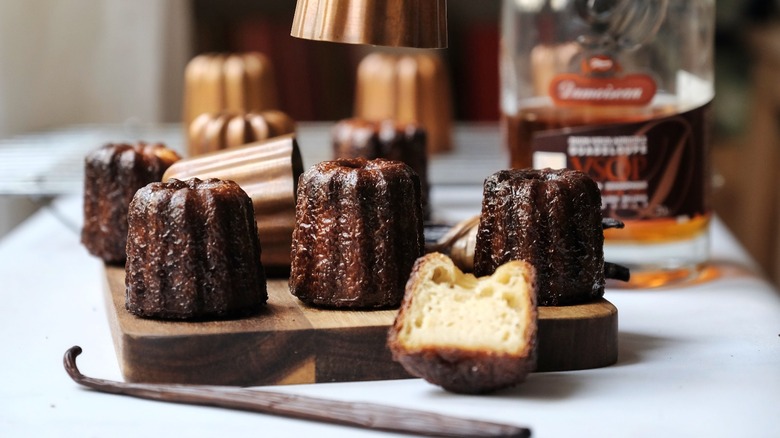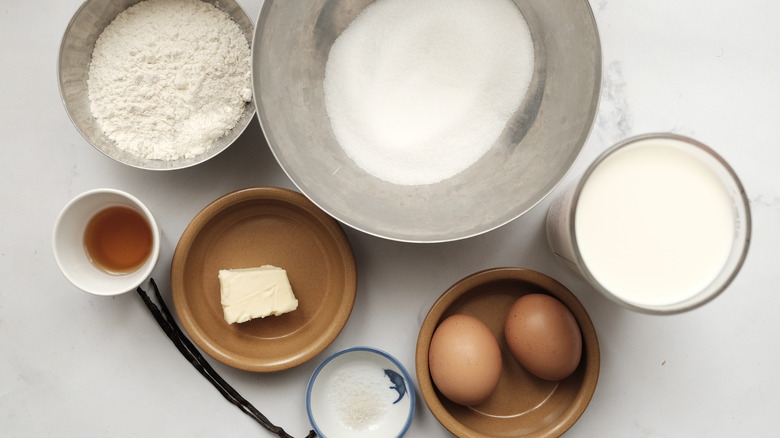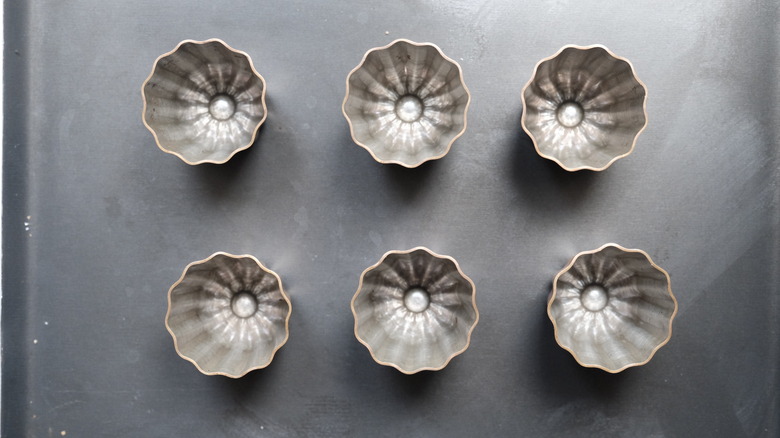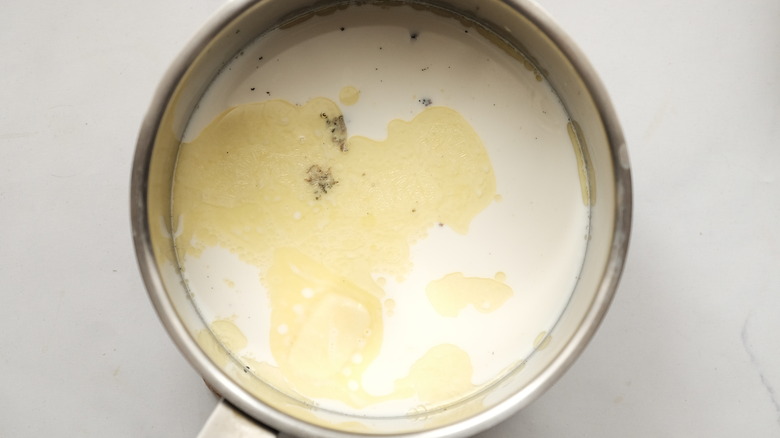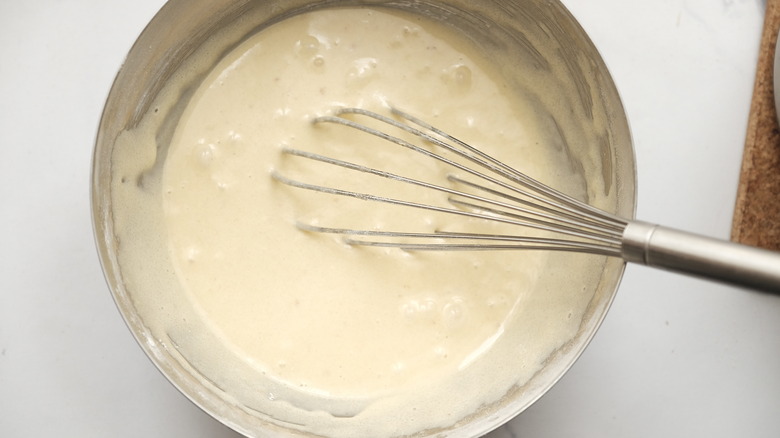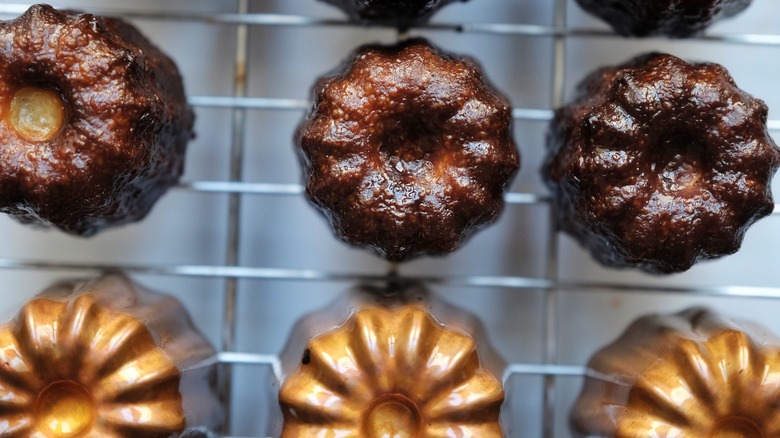Cannelés De Bordeaux Recipe
Have you ever tried cannelés de Bordeaux? As recipe developer Eric Ngo tells us, "If you've never had a cannelé, you're missing out!" He describes this pastry as having a crispy exterior when freshly cooked, but says "with time it will become a chewy caramelized shell with a soft rubbery custard texture on the inside."
Ngo says that everyone should be sure to buy these whenever they're visiting Bordeaux, as this regional dessert specialty is a must-try and is among his favorite pastries. Should a trip to the south of France not lie in your near future, however, you may wish to try making them yourself. Ngo does caution, however, that this deceptively simple recipe isn't for beginners, describing it as "labor intensive." He goes on to say, "Not only does it require resting time, but also expert manipulation when it comes to the baking technique and time." What's more, you cannot make cannelés without the proper molds, and these aren't something you're likely to have lying around the house unless you're a master baker. If you're willing to get the proper equipment and put forth the effort, however, then you'll have a beautiful, authentic dessert that is sure to impress your dinner guests.
Gather the ingredients for cannelés de Bordeaux
Making cannelés doesn't require a lengthy list of ingredients, nor are any of the necessary items anything you'll need to special order. Still, don't be fooled by the simplicity, as Ngo assures us that "the secret to making the best cannelés is using quality ingredients."
As for the ingredients themselves, you'll need whole milk, unsalted butter, eggs, sugar, and flour. Ngo's traditional-style cannelés are also flavored with vanilla and rum.
Make sure you have the proper molds
Not only do you need the proper ingredients, but you also need one very specific piece of equipment for this recipe, that being a dozen cannelé molds. As Ngo informs us, this pastry "has to be baked into this specific mold for it to be considered a cannelé."
As to where you obtain a set of such molds, Ngo advises looking online or in kitchen supply stores, particularly ones that specialize in equipping bakeries. He cautions against purchasing the cheaper rubber molds, though, saying "you won't achieve as good caramelization" with these as you will with metal ones, and the color of the pastries may be uneven. Ngo says copper cannelé molds are best, while aluminum ones are also a good choice.
Infuse the milk with rum and vanilla
Pour the milk into a saucepan and add the butter, vanilla, and rum. If you'd prefer not to cook with alcohol, though, Ngo does note that "the rum is optional." He also notes that you can use either a vanilla bean or vanilla extract, although he himself prefers using the bean for better flavor.
Gently heat the milk until it comes to a slow boil, then cover the pan and turn off the heat. Let the milk sit for 20 minutes so it can become infused with the vanilla and rum flavors.
Make the cannelé batter
Whisk the eggs and the sugar in a large bowl until the mixture appears pale, something Ngo says should take about a minute. Stir in the flour, then add half of the warm milk. Stir the milk in, then add the rest of the milk and stir until it's fully incorporated, too. At this point, Ngo says the batter should look "similar to a crêpe batter."
You will now need to pause the process for a while, since Ngo says that "it is important to let the batter cool down completely before baking" and will need to be refrigerated for at least 12 hours before cooking. If you cover the bowl with plastic wrap, the batter can be kept in the fridge for up to 3 days, but Ngo reminds us to "make sure to stir it before filling the molds."
Bake the cannelés
After the batter has rested, preheat the oven to 480 F. Grease the inside of your cannelé molds with melted butter or cooking spray, then stir the batter and fill the molds ¾ of the way to the top. Bake the cannelés for 10 minutes, then lower the oven temperature to 350 F and bake them for an hour longer. Let the pastries cool for 5 minutes before you attempt to remove them from the molds.
Ngo says the cannelés will last for about 3 days in an airtight container. He also notes that once they're a day old, they will lose their crunch and become somewhat rubbery. As he says, though, this "isn't bad, it's part of the charm of the cannelé's texture."
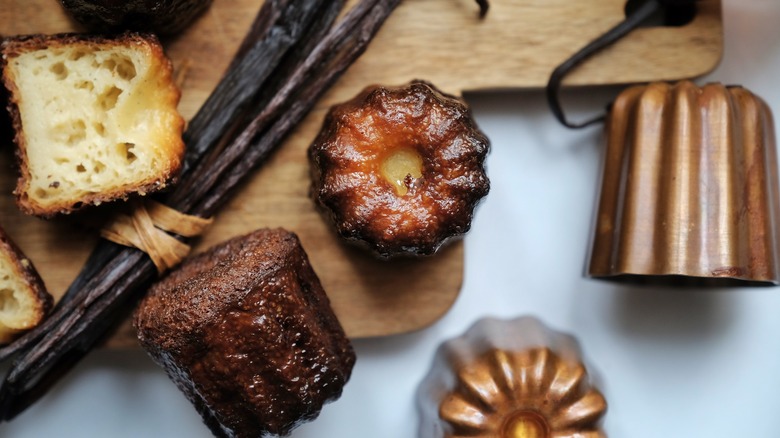
- 2 cups whole milk
- ½ vanilla bean (or 1 ½ teaspoon vanilla extract)
- 1 tablespoon dark rum
- 2 tablespoons unsalted butter
- 2 eggs
- 1 cup granulated sugar
- ½ cup + 2 tablespoons all-purpose flour
- Combine the milk, vanilla, rum, and butter in a pan and bring to a boil.
- Turn off the heat and cover the pan for 20 minutes, to allow the vanilla to infuse the milk mixture.
- Whisk the eggs and sugar in a large bowl for 1 minute or until the mixture appears pale.
- Stir the flour into the egg mixture until fully incorporated.
- Add half of the warm milk to the egg mixture, stirring it in right away, then repeat with the remaining warm milk.
- Cover the bowl with plastic wrap and store it in the refrigerator overnight.
- Preheat the oven to 480 F.
- Coat the inside of the cannelé molds with cooking spray or melted butter.
- Fill the molds ¾ of the way.
- Bake the cannelés at 480 F for 10 minutes.
- Lower the oven temperature to 350 F and bake the cannelés for 1 hour.
- Allow the cannelés to cool down for 5 minutes before taking them out of their molds.
| Calories per Serving | 143 |
| Total Fat | 4.0 g |
| Saturated Fat | 2.2 g |
| Trans Fat | 0.1 g |
| Cholesterol | 35.8 mg |
| Total Carbohydrates | 23.7 g |
| Dietary Fiber | 0.2 g |
| Total Sugars | 18.8 g |
| Sodium | 28.3 mg |
| Protein | 2.9 g |
